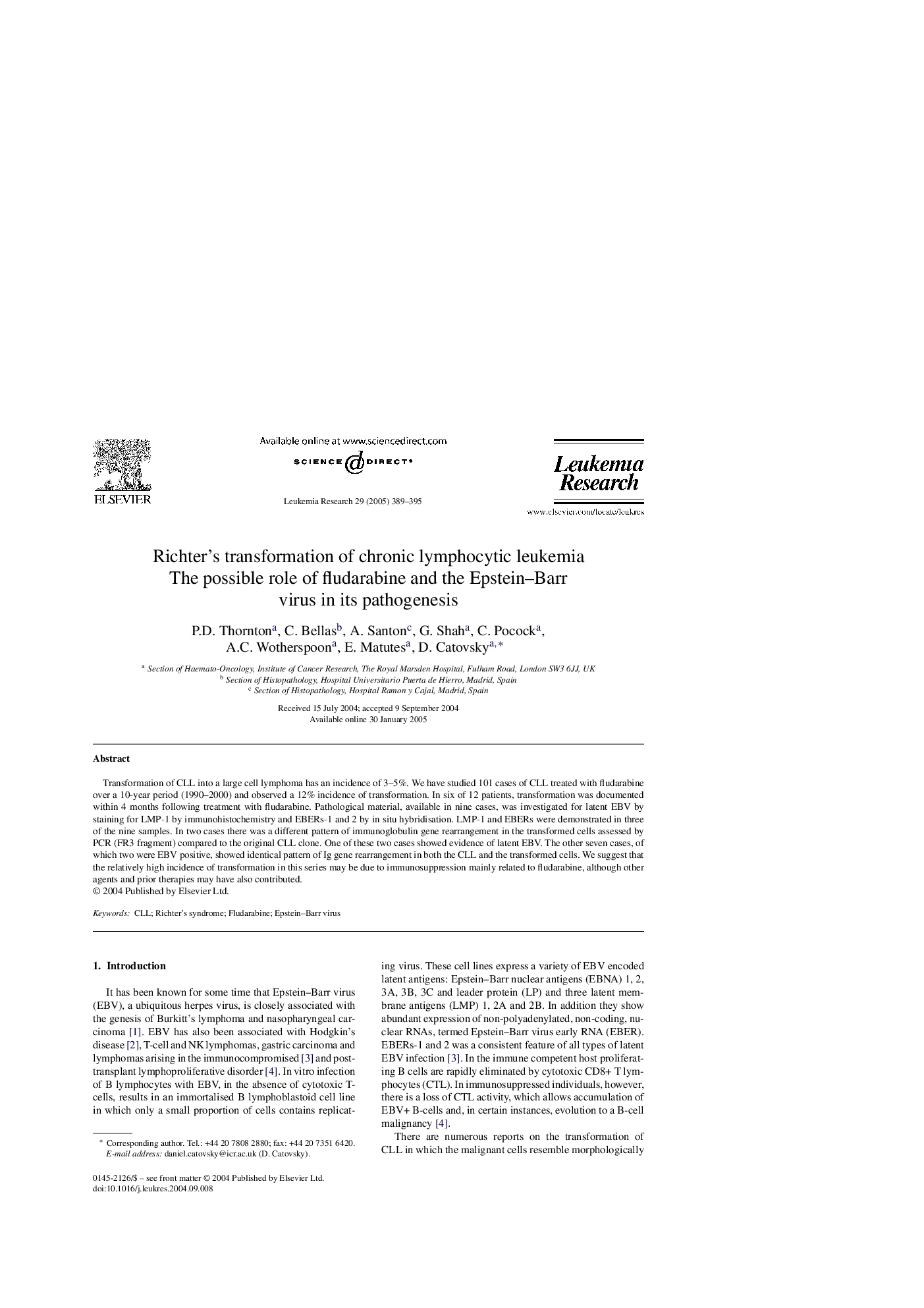| Article ID | Journal | Published Year | Pages | File Type |
|---|---|---|---|---|
| 10909548 | Leukemia Research | 2005 | 7 Pages |
Abstract
Transformation of CLL into a large cell lymphoma has an incidence of 3-5%. We have studied 101 cases of CLL treated with fludarabine over a 10-year period (1990-2000) and observed a 12% incidence of transformation. In six of 12 patients, transformation was documented within 4 months following treatment with fludarabine. Pathological material, available in nine cases, was investigated for latent EBV by staining for LMP-1 by immunohistochemistry and EBERs-1 and 2 by in situ hybridisation. LMP-1 and EBERs were demonstrated in three of the nine samples. In two cases there was a different pattern of immunoglobulin gene rearrangement in the transformed cells assessed by PCR (FR3 fragment) compared to the original CLL clone. One of these two cases showed evidence of latent EBV. The other seven cases, of which two were EBV positive, showed identical pattern of Ig gene rearrangement in both the CLL and the transformed cells. We suggest that the relatively high incidence of transformation in this series may be due to immunosuppression mainly related to fludarabine, although other agents and prior therapies may have also contributed.
Related Topics
Life Sciences
Biochemistry, Genetics and Molecular Biology
Cancer Research
Authors
P.D. Thornton, C. Bellas, A. Santon, G. Shah, C. Pocock, A.C. Wotherspoon, E. Matutes, D. Catovsky,
